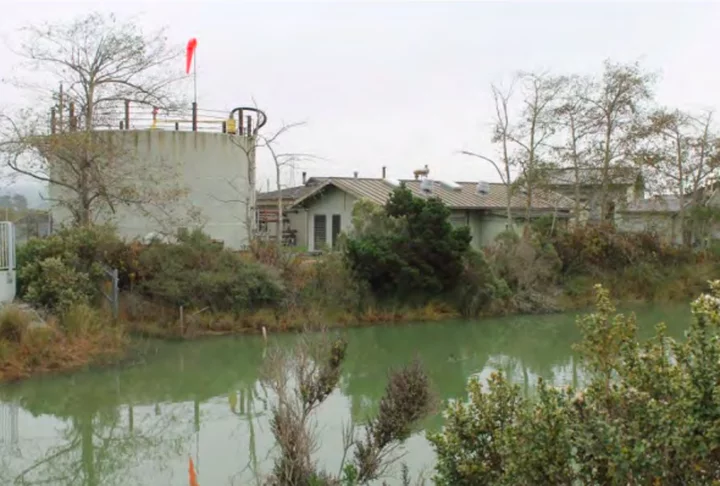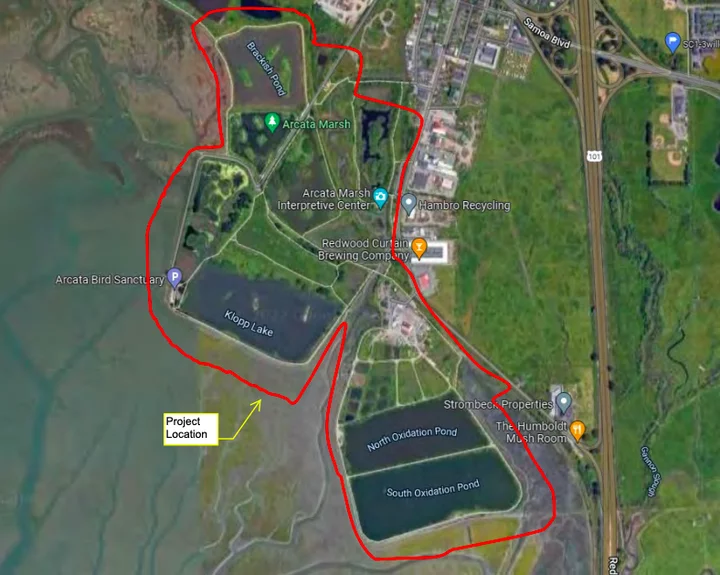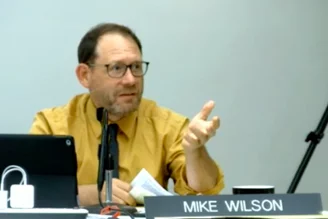View looking across Butcher Slough at primary digester and generator building within Arcata’s Wastewater Treatment Plant headworks. Image via the City of Arcata.
###
The California Coastal Commission has given the City of Arcata the green light to move forward with much-needed improvements to the city’s aging Wastewater Treatment Facility.
The Arcata Wastewater Treatment Facility – the part of the Arcata Marsh that theoretically makes the city’s sewage and wastewater nontoxic enough to pump into nearby wetlands – is getting pretty old. Despite ongoing efforts to keep the aging infrastructure up and running, parts of it are failing. As a result, the Regional Water Quality Control Board has issued several violations to the city for failing to comply with state-mandated discharge requirements.
The city has been working to repair the issues and comply with the board’s discharge requirements in recent years. Now, with the Coastal Commission’s blessing and a Coastal Development Permit secured, the city can finally move forward with Phase 1 of the improvement project, including the construction of a new electrical and ultraviolet disinfection system that will replace the facility’s aging chlorination filtration system, upgrades to pump stations, installation of new electrical infrastructure throughout the facility and construction of a new outfall.
Aerial view of the Wastewater Treatment Facility. | Image via the City of Arcata.
These upgrades will keep the facility up and running in the short term, but what about long-term planning strategies?
Local coastal experts expect Humboldt Bay’s shoreline to rise by as much as three feet in the next 40 years. Rising sea levels will only exacerbate existing flood hazards, especially in the low-lying Arcata Bay area.
“The project raises important questions concerning whether it is appropriate to maintain the [facility] in an area that is increasingly vulnerable to flooding and other coastal hazards,” Tamara Gedik, program analyst at the California Coastal Commission, said during Thursday’s meeting. “There is a risk that a portion of the upgraded facility will be inundated with floodwaters which could compromise the facilities functionality and threaten public and environmental health by potentially sweeping up materials and releasing biosolids or untreated wastewater.”
Coastal Commission staff offered 10 special conditions to the permit application for long-term planning to address impending coastal hazards in the next 30 years. Condition 4, for example, stipulates that the city must complete a Coastal Hazards and Adaption Implementation Plan in place in the next five years.
Emily Benvie, deputy director of community services for the City of Arcata, noted that Phase 1 improvement efforts would help the city maintain operations during the interim while staff develop long-term strategies.
“The city has been seeking funding to design and permit a levee augmentation project around the core treatment facility to provide additional protective measures from impacts of coastal hazard impacts,” she said. “The city will implement the adaptation measures that are deemed most appropriate for given timeframes. …The city looks forward to being back before the commission in the not-too-distant future with a separate [Coastal Development Permit application] for levee augmentation.”
Speaking on behalf of the Surfrider Foundation, Humboldt Baykeeper and the North Coast Environmental Center during public comment, Mandy Sackett urged commissioners to move forward with staff’s recommendation to approve the interim permit and allow upgrades to the facility.
“They are necessary to protect Humboldt Bay,” she said. “The relative rate of sea level rise in Humboldt Bay is twice the state average due to subsidence. …The 30-year permit allows time to analyze relocation and alternatives to shoreline armoring.”
Commissioner and Third District Humboldt County Supervisor Mike Wilson requested a modification to the attached addendum, noting that everything past the first paragraph of the document “does the job” and does not necessarily need to reiterate the content of the staff report. He then made a motion to approve the proposal which was seconded by Commissioner Dayna Bochco.
Before taking a vote, Wilson took a moment to thank Arcata and Coastal Commission staff for moving the improvement project forward.
“Forty years ago this was cutting edge technology…[the facility] is just in a vulnerable location and it has to be dealt with,” he said. “I also want to shout out to myself that my thesis for my master’s in environmental systems engineering was the UV disinfection of the marsh effluent at this location which is now being implemented 30 years later. So, it takes a while.”
“We always thought Commissioner Wilson was a man before his time,” Commission Chair Donne Brownsey laughed.
The motion passed unanimously.
PREVIOUSLY:



CLICK TO MANAGE